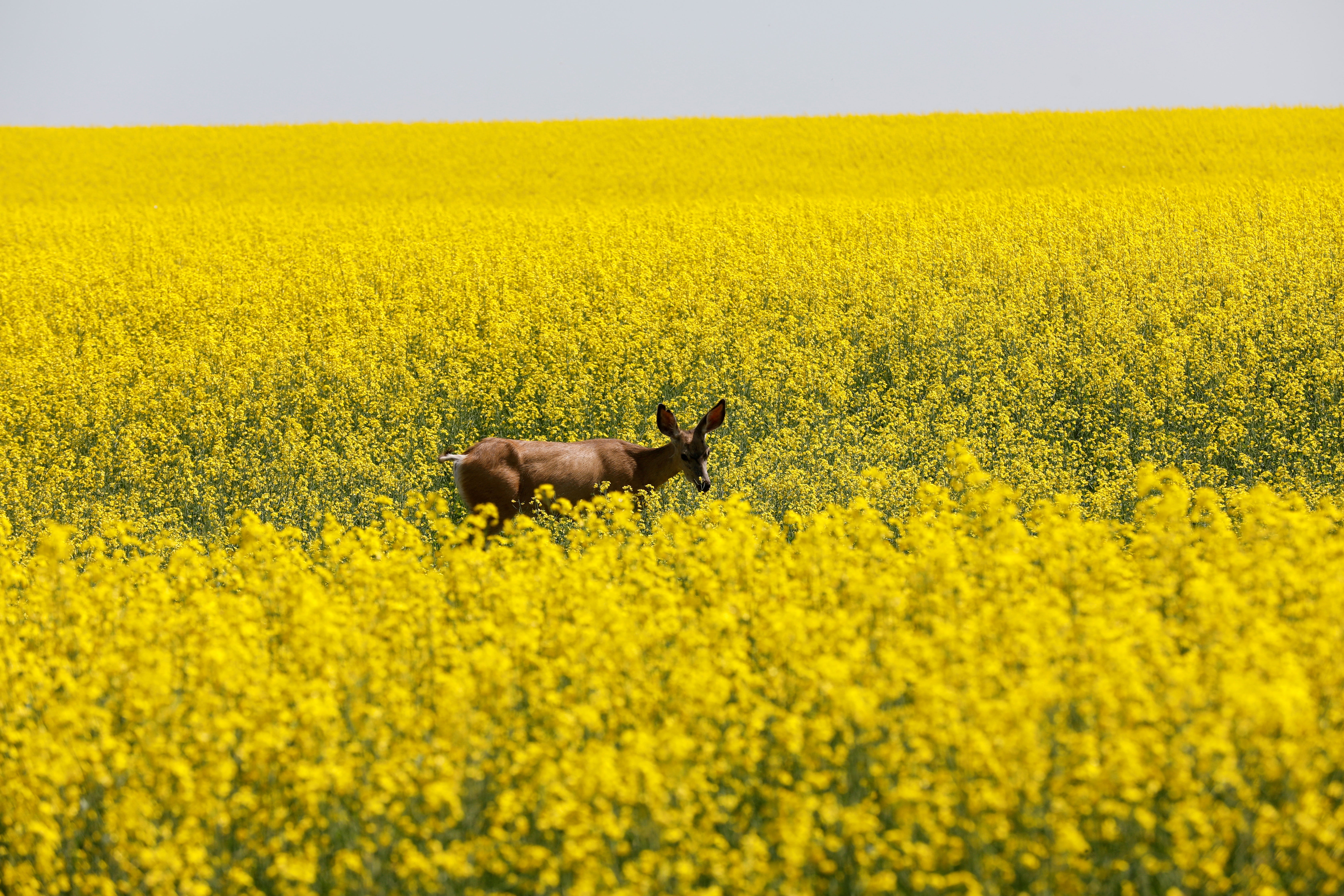Humans may give viruses to animals in ‘spillback’ events more often than previously thought
Such events recently gained attention due to spread of Covid from humans to wild white-tailed deer

Your support helps us to tell the story
From reproductive rights to climate change to Big Tech, The Independent is on the ground when the story is developing. Whether it's investigating the financials of Elon Musk's pro-Trump PAC or producing our latest documentary, 'The A Word', which shines a light on the American women fighting for reproductive rights, we know how important it is to parse out the facts from the messaging.
At such a critical moment in US history, we need reporters on the ground. Your donation allows us to keep sending journalists to speak to both sides of the story.
The Independent is trusted by Americans across the entire political spectrum. And unlike many other quality news outlets, we choose not to lock Americans out of our reporting and analysis with paywalls. We believe quality journalism should be available to everyone, paid for by those who can afford it.
Your support makes all the difference.Humans give viruses back to animals in “spillback” events more often than previously thought, suggests a new study that has implications for wildlife conservation and public health.
Such events have recently gained attention due to the spread of Covid-19 from humans to wild white-tailed deer in the US and Canada, said scientists, including those from Georgetown University in the US.
Over the course of the Covid pandemic, scientists discovered that the novel coronavirus that causes Covid could spread from humans to hamsters, minks, leopards, zoo lions, and tigers.
With recent data suggesting that a white-tailed deer may have brought the virus back to humans, in at least one case, researchers expressed concerns that new animal reservoirs might give the virus extra chances to evolve new variants.
In order to better understand the risk of human-to-wildlife pathogen transmission, scientists assessed published reports on such spillback events and described nearly 100 different cases where diseases have jumped from humans back into wild animals.
“To help guide conversations and policy surrounding spillback of our pathogens in the future, we went digging through the literature to see how the process has manifested in the past,” study senior author Gregory Albery from Georgetown University said in a statement.
The findings, published on Tuesday in the Ecology Letters journal, revealed that nearly half the 97 incidents reported in the new study occurred in captive settings like zoos, where veterinarians keep a close eye on animals’ health and are more likely to notice when a virus makes the jump.
Human-to-primate transmission events accounted for more than half of the 97 cases – an unsurprising result since pathogens find it easier to jump between closely-related hosts and because wild populations of endangered great apes are carefully monitored.
“This supports the idea that we’re more likely to detect pathogens in the places we spend a lot of time and effort looking, with a disproportionate number of studies focusing on charismatic animals at zoos or in close proximity to humans,” said study lead author Anna Fagre from Colorado State University in the US.
Researchers said such spillback may increase the burden of disease in animal populations since some human pathogens can cause morbidity or mortality in animals.
The second major concern, they said, is the potential for “secondary spillover” from animals back into human populations, threatening public health.
Citing an example, researchers said bovine tuberculosis in badgers in the UK “represent a significant barrier to controlling and eliminating the disease”.
Scientists called for further, more focused research to find which cross-species transmission events studies are missing – not only for both public health concerns but also for the conservation of other species being infected.
The new review research also found machine-learning tools can help scientists predict which species may likely get infected by humans.
When they compared species that have been infected with Covid to predictions made using such tools by other researchers earlier in the pandemic, they found scientists were able to guess correctly more often than not.
“It’s quite satisfying to see that sequencing animal genomes and understanding their immune systems has paid off,” says Colin Carlson, another co-author of the study from Georgetown University.
“The pandemic gave scientists a chance to test out some predictive tools, and it turns out we’re more prepared than we thought,” Dr Carlson said.
Since the world is closely watching the Covid virus, scientists said they are more equipped to detect spillback of this pathogen when it happens, but added that it was “much harder” to credibly assess risk in other cases with very little information.
As a result, they said the severity and risk of spillback for human health or wildlife conservation for pathogens other than the coronavirus remain hard to measure.
Researchers said there is an urgent need for the implementation of new measures to prevent subsequent epidemics in humans.
“Long-term monitoring helps us establish baselines for wildlife health and disease prevalence, laying important groundwork for future studies. If we’re watching closely, we can spot these cross-species transmission events much faster, and act accordingly,” Dr Farge said.
“A fuller understanding of such processes, and the ecology of multi-host systems in general, will reveal at-risk hosts and associated pathogens, inform fundamental biological understanding of the symmetry of interspecific pathogen transmission, and improve human and animal health in the coming century,” scientists concluded.
Join our commenting forum
Join thought-provoking conversations, follow other Independent readers and see their replies
0Comments